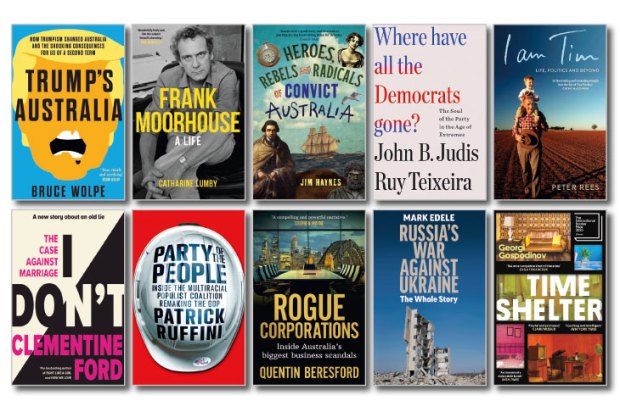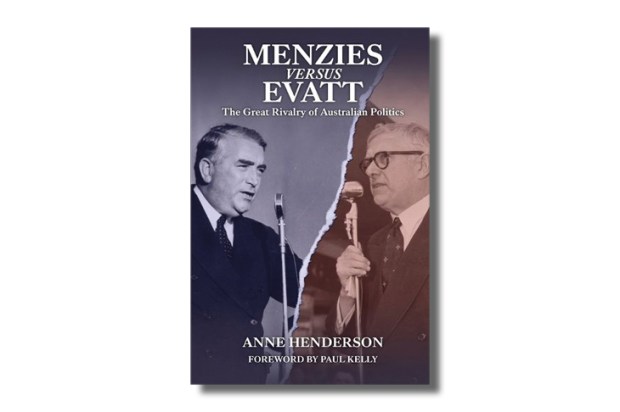‘Consider, too, the world’s fisheries.’ This line more or less sums up the tone of Destroying the Joint: Why Women Have to Change the World. It’s a collection of essays, edited by Jane Caro, that doesn’t quite know what it is or where it’s coming from so has decided to throw in everything available and see what sticks.
Destroy the Joint is, depending on your point of view, a groundbreaking new social movement, good branding for an old social movement, not a social movement at all, a Twitter hashtag, just a media watchdog, a media watchdog but so much more, in no way a media watchdog, for women in leadership, against women in leadership if they aren’t the right kind of women, against leadership generally as a patriarchal structure, capitalist, anti-capitalist and neutral. Those are just the perspectives on Destroy the Joint expressed in this mid-sized collection of essays; the writers acknowledge that there are even more opinions out there. No wonder the book feels unfocused.
What is generally agreed is how Destroy the Joint arose. Sydney ham-radio enthusiast Alan Jones found himself even more outraged than usual in late 2012 when the federal government announced aid grants to promote the political participation of women in the Pacific region. A ludicrous idea, he sprayed; women‚ specifically female leaders like Julia Gillard and Christine Nixon — ‘they’re destroying the joint!’
Caro leapt into e-action, and the #destroyingthejoint hashtag exploded on Twitter. An enormously active and vocal online community sprang up and ran Alan Jones out of town on a rail (in the sense that he was mildly inconvenienced, and continues to be paid large sums to broadcast offensive opinions to his increasingly elderly and increasingly small listener base).
A wave of outrage following an Alan Jones comment is nothing new. What is new is the longevity of the outrage — it’s been months, and Destroy the Joint remains an active online community. ‘They’re destroying the joint’ was not the most offensive thing said about women in 2012. It wasn’t even the most offensive thing said about women in 2012 by Alan Jones. Why, then, did Destroy the Joint catch on?
Paula McDonald and Abby Cathcart give the clearest answer: it’s not that the comment was the most offensive, it’s that it was a clear and unambiguously sexist statement. As Catherine Fox observes, Jones is an icon of the many men ‘deeply uncomfortable with and affronted by the idea of women in charge’, and his comment is a more blunt expression of the kind of subtle commentary many women have to put up with at home and at work. As such, it resonated more than expected, and 2GB paid the price.
Is there a broader social role for Destroy the Joint, beyond complaining about 2GB? Emily Maguire puts the outrage in context — foreign aid and women fighting for social and political freedom and influence around the world — in one of the best essays in the collection. Leslie Cannold tries to do the same thing and misses badly by apparently comparing Destroy the Joint to the Arab Spring, a slight oversell.
Melissa Lucashenko, in a strong piece about her family history, makes some valid observations about the value of movements like Destroy the Joint in showing that oppressive institutions are vulnerable to change. The Destroy the Joint admins, in a clumsy group-written essay clearly heavy with track-changes, provide a sweeping statement about Destroy the Joint’s potential while carefully avoiding any specifics.
Some of the more interesting essays deal with broader issues than ‘what is Destroy the Joint’. Some of the less interesting ones do too. Clementine Ford writes about the destructive impact of rape jokes, Stella Young discusses the additional difficulties faced by women with a disability, and Steph Bowe and Lucy Edelstein provide a teenage perspective on sexism in society. All are compellingly written and add depth to the collection.
On the other hand, Carmen Lawrence contributes a ‘here’s one I prepared earlier’ diatribe about environmentalism, Yvette Vigando brings a pointless and unreadable piece written entirely in tweets and the less said about Krissy Kneen’s semi-autobiographical short story about deviant porn and academia the better.
To her credit, Caro has not shied away from including essays criticising Destroy the Joint. All criticism comes from the Left — although conservative women were approached, none agreed to contribute – and is of the irritating ‘holier than thou’ variety which refuses to recognise that something can be positive without being perfect. Greens leader Senator Christine Milne is unsurprisingly the worst offender, claiming bafflingly that Julia Gillard’s speech about misogyny was not in fact a feminist act as it was politically motivated, and as such is not part of the Destroy the Joint ethos. This is a classic Greens failure to acknowledge complexity or in fact reality. The essay is also, amazingly, more boring than Milne’s gardening blog.
Milne is not the only contributor to criticise Gillard for being insufficiently left-wing. Some points are valid: slashing benefits to single mothers is not a particularly feminist act. But, in the wake of the recent obliteration of Australia’s first female prime minister — a destruction aided in part by the kind of sexism peddled by Jones and others — it reads less like valid criticism and more like the movement beginning to once again devour itself.
Similarly, the enthusiasm of other contributors for the capacity of Destroy the Joint to change the way people view and talk about female leaders seems bright and brittle given the recent return to the status quo. Part of the strength of Destroy the Joint came from the optimism that early success brings; the lack of focus that has given Caro difficulties in assembling this collection of essays coherently will present similar problems for the longevity of Destroy the Joint as a whole.
Got something to add? Join the discussion and comment below.
Get 10 issues for just $10
Subscribe to The Spectator Australia today for the next 10 magazine issues, plus full online access, for just $10.
You might disagree with half of it, but you’ll enjoy reading all of it. Try your first month for free, then just $2 a week for the remainder of your first year.












Comments
Don't miss out
Join the conversation with other Spectator Australia readers. Subscribe to leave a comment.
SUBSCRIBEAlready a subscriber? Log in